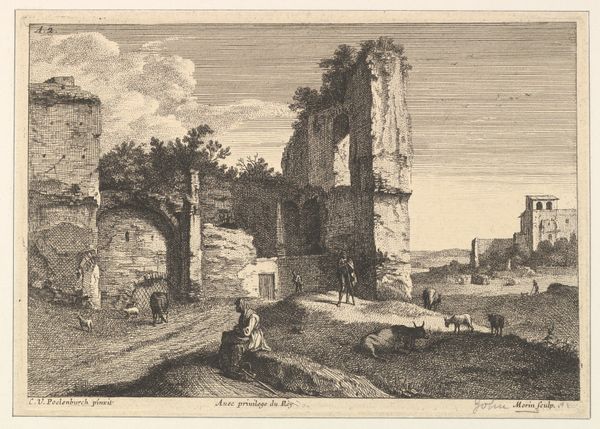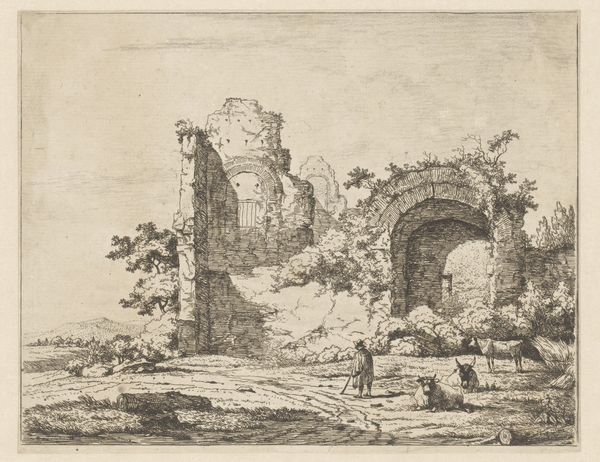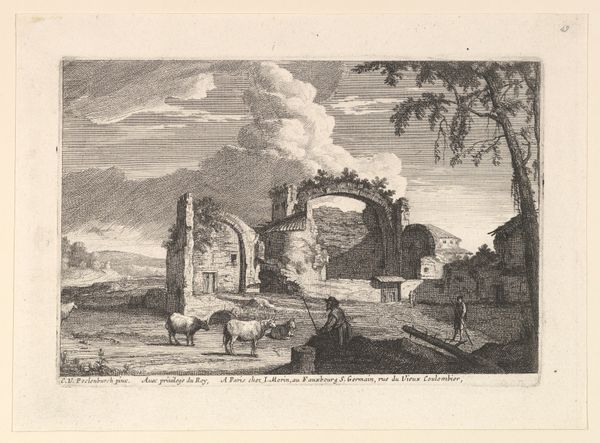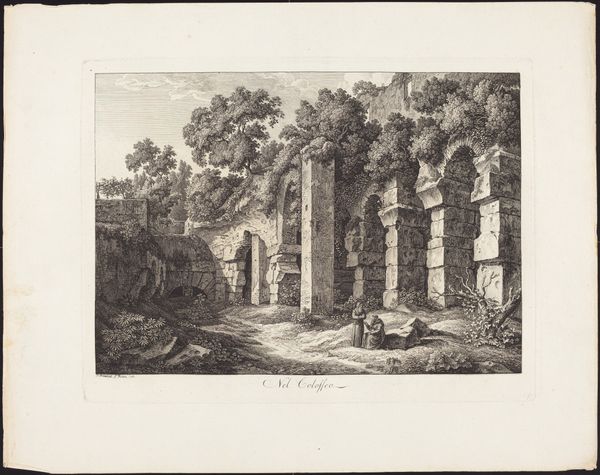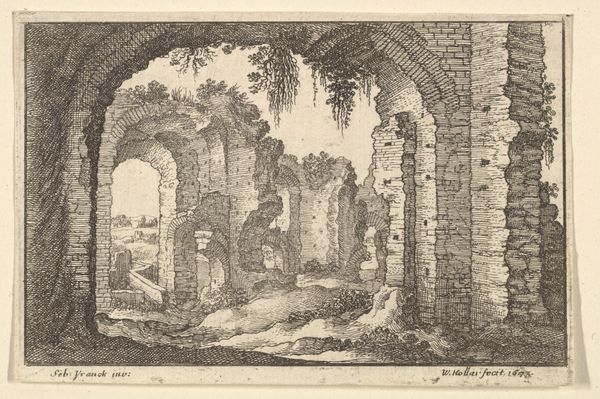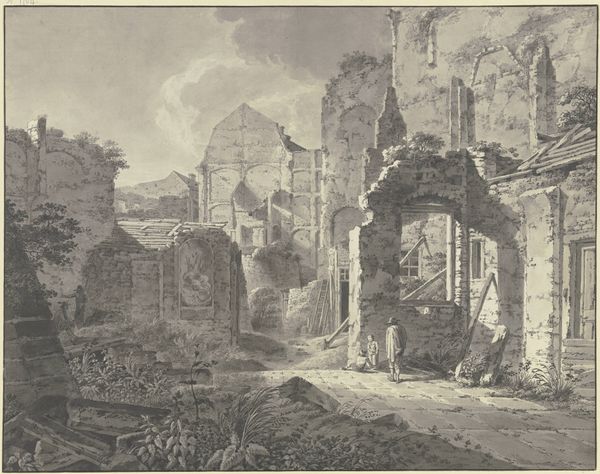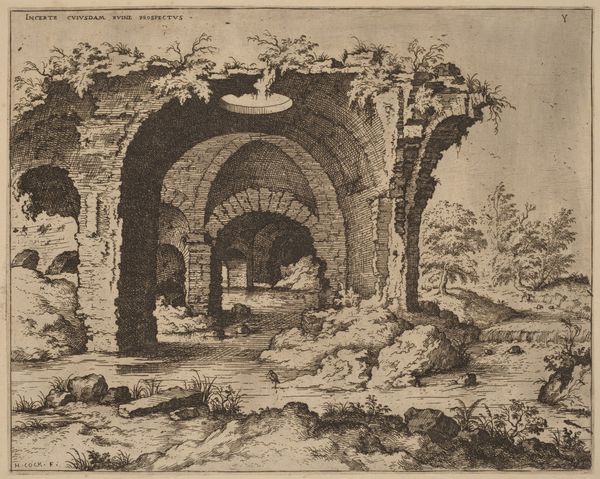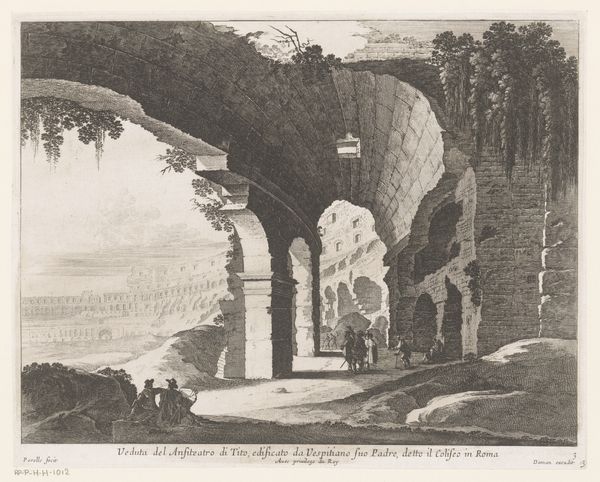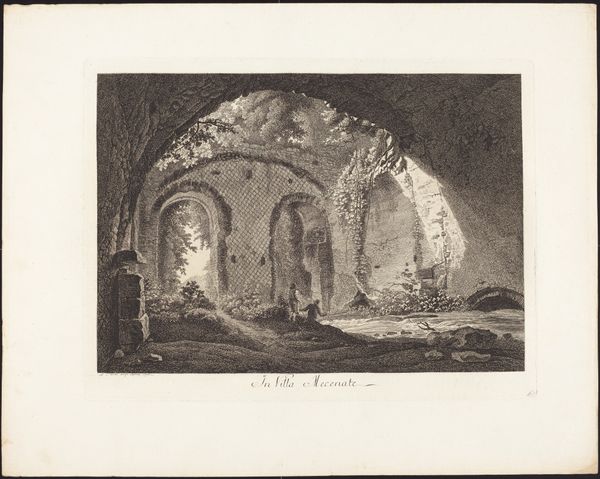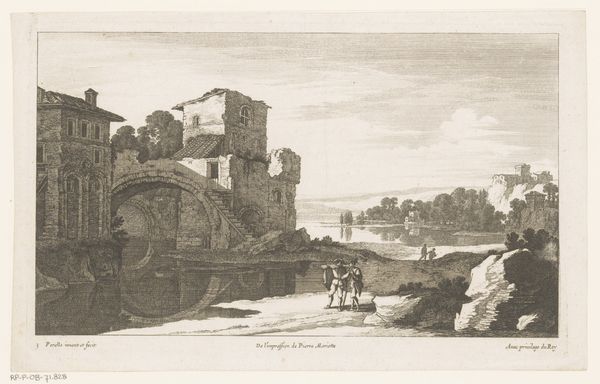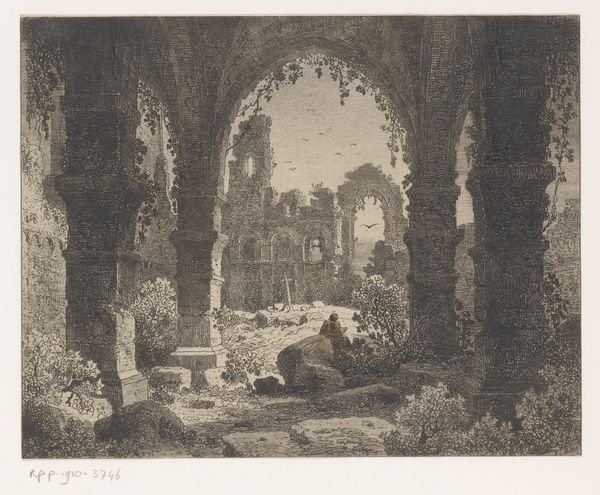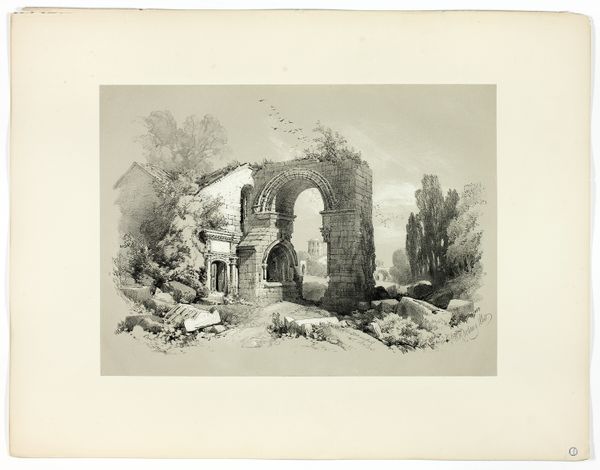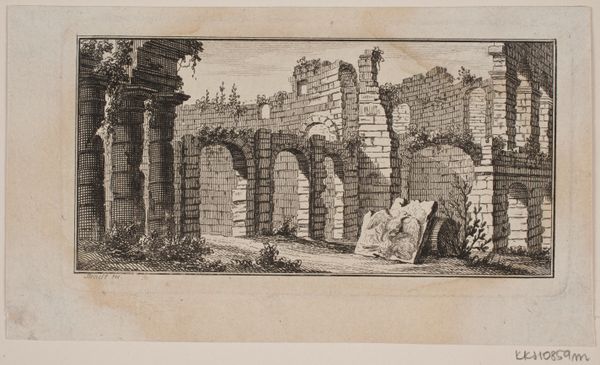
etching, engraving, architecture
#
baroque
#
etching
#
landscape
#
form
#
line
#
engraving
#
architecture
Dimensions: height 149 mm, width 215 mm
Copyright: Rijks Museum: Open Domain
Curator: This is "Vervallen aquaduct in een landschap," an etching and engraving by Jean Morin, dating back to sometime between 1625 and 1650. It currently resides in the Rijksmuseum collection. Editor: A ruin, yes, but it feels incredibly…sturdy, almost monumental despite its dilapidation. The sheer mass of those stone blocks is palpable, especially given the diminutive scale of the animals wandering among them. Curator: Absolutely. Morin's mastery lies in his application of line to suggest form and volume. Notice how the cross-hatching varies in density, creating depth and shadow. The architectural elements become a study in geometrical abstraction. Editor: I am drawn to how this construction, made up of individual stone blocks shaped by human hands, degrades and blends again into its environment. You can imagine the laborers involved in extracting the stones from the quarry. Curator: A provocative notion, given the baroque aesthetic’s preference for ornamentation and grandeur. The stark linearity here offers a certain counterpoint, suggesting a focus on underlying structural components. Editor: Exactly! It reminds us of the contrast between ambition and time; this aqueduct embodies social structure itself becoming worn down by nature, like this etching, slowly wearing the plate itself, altering under production's constant duress. Curator: An interesting perspective. The composition, with the aqueduct acting as a framing device, directs the eye towards the landscape beyond. It’s a structured gaze. Editor: Yes, structured and, even more interestingly, circulated. Etchings were tools of distribution—taking images from place to place and moving skills as well as objects to new contexts. It wasn’t only about what but how something came to be seen and traded in the early modern world. Curator: A worthy addition. I am intrigued, in the end, by Morin's ability to reconcile seemingly opposed perspectives. The classical and baroque traditions seem to dance with more earthy realities of labor and attrition. Editor: For me, thinking about the making of this etching is crucial to realizing this ruin as more than just another relic—but a symbol of a complex social reality, material production, circulation, and history being gradually unmade by entropy itself.
Comments
No comments
Be the first to comment and join the conversation on the ultimate creative platform.
